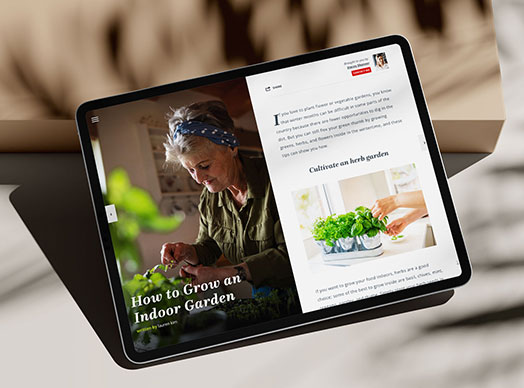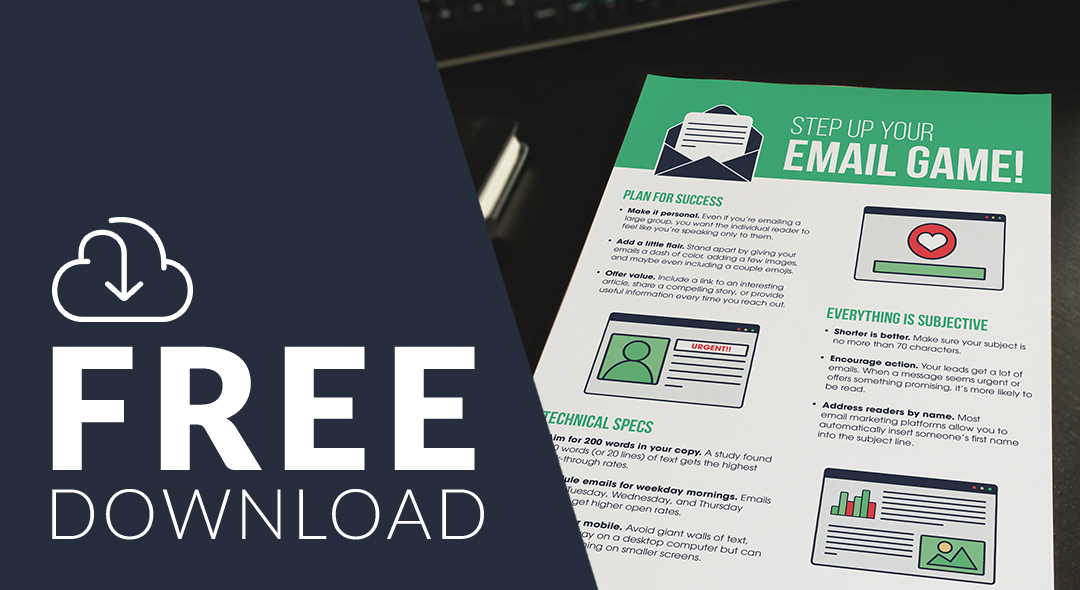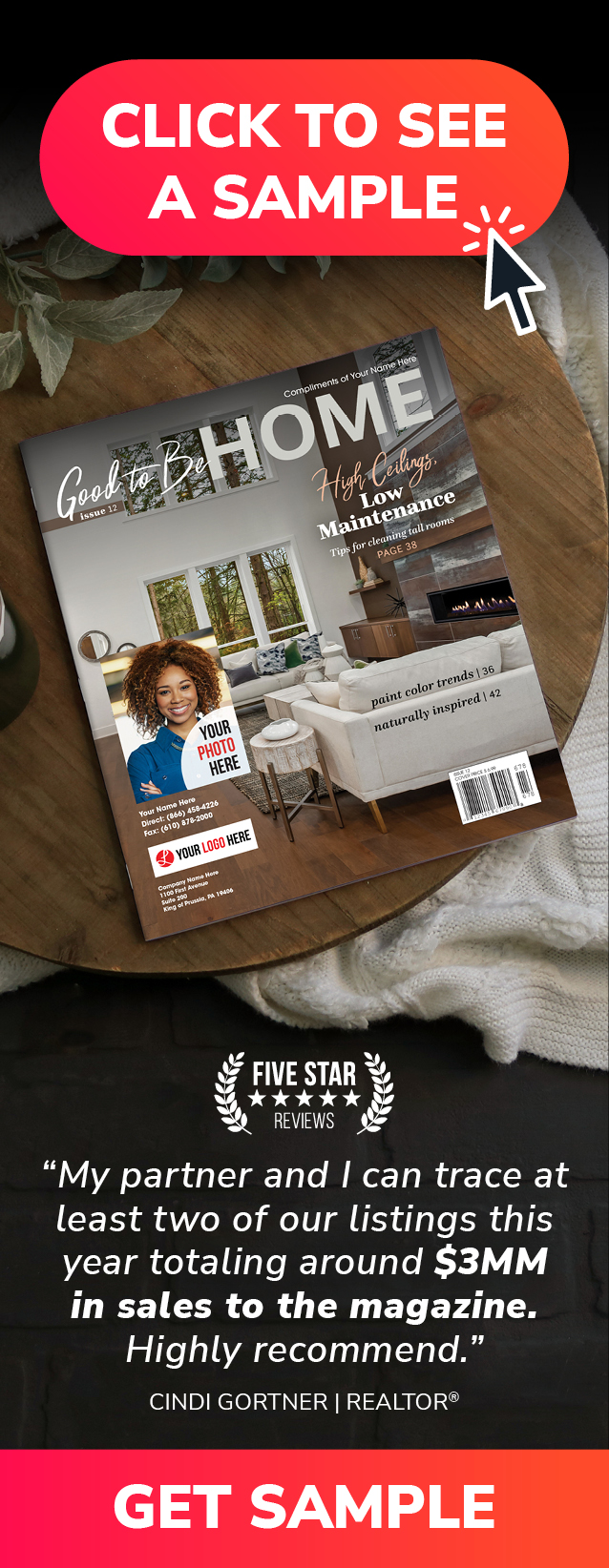Are you a real estate agent looking to make the most of your email marketing list? Then you’re in the right place!
Whether you’re just starting out, own a list of contacts with great potential, or have decided it’s time to follow through on the advice of every marketing guru out there, the strategies I’m about to share are sure to help.
But before you commit to any of them, first determine what you want to achieve. Once you have that goal in mind, you can choose your strategies with confidence.
One more thing to note: while this blog is most directly intended to help you develop segmented email campaigns, you should aim to use segmentation across all your marketing. As you read, imagine how you can apply the strategies I suggest to other types of campaigns so you can truly maximize your marketing.
Email segmentation basics
Because your email segmentation strategy is determined by your goal, you’ll need to re-sort your email contact list for every campaign. This may sound like a lot of work, but when you target distinct market segments, your communication will be more meaningful to recipients—and that will inspire greater engagement and interaction.
Mailchimp previously examined some of the segmented campaigns sent by its users, which affirmed the value of list segmentation:
One thing we can say with complete confidence . . . is that segmenting your email marketing lists has an overwhelmingly positive impact on the engagement of your subscribers. Open and click rates were up across the board in all segmentation scenarios that we’ve investigated. Similarly, targeting subscribers via some type of identifying merge value—like interest, job title, location, etc.—helped keep abuse and unsubscribe rates down.
The power of any email segmentation strategy comes down to how easy it makes it for you to select the most appropriate contacts for a particular campaign. Let’s start by discussing two common, first-level categories to place your contacts in: recipient type and potential value.
- Recipient type. There are typically three main levels for this category: clients, prospects, and leads. Clients are people you’ve done business with, prospects are qualified contacts you’ve already engaged with and have a good chance of converting, and leads are people you have yet to establish a relationship with.
- Potential value. This category is usually broken down into A, B, and C lists, with A being those actively looking to buy or sell a home, B being those who have expressed a desire to buy or sell but aren’t ready to pull the trigger, and C being all other contacts you market to in the hope that when they are ready to make a move, they’ll call you.

The power of any email segmentation strategy comes down to how easy it makes it for you to select the most appropriate contacts for a particular campaign.
Once you’ve defined your first-level categories, you can then start to segment them further into more narrowly defined sub-categories. Add the necessary data fields to your client relationship management (CRM) system to capture information that will allow you to create these categories and generate mailing lists for the types of campaign you most often run.
Email segmentation ideas
Remember that the purpose of an email marketing segmentation strategy is to make your email communication as relevant to your audience as possible. The email segmentation examples that follow are mutually independent and can be merged in any number of ways or combinations to provide you with the best-targeted list for your campaign. The more ways you can slice and dice your audience—and distinguish one contact segment from the next—the better you will be able to write communications that focus on the interests and needs of your recipients and achieve your goals.
Recency
Knowing when you first and last reached out to each person in your database makes it possible to track some key performance indicators (KPIs):
- The average length of your sales cycle (helps with setting sales projections)
- The money you spend on marketing (helps with budgeting and determining ROI)
- The number of follow-ups to conversion (helps with setting a contact schedule)

Knowing when you first and last reached out to each person in your database makes it possible to track some key performance indicators.
Combine these KPIs with some additional data, and you can reverse engineer your income goals and determine the actions needed to reach them.
Frequency
To avoid neglecting anyone on your list or missing a business opportunity, create categories that help you consistently reach out to your database of clients.
- With past clients, it’s usually sufficient to connect every one to two months. Provide an item of value each time to remain top of mind for when they or someone they know next needs your services. Many of ReminderMedia’s clients take advantage of our personally branded, automated Digital Edition magazine to ensure that their past clients receive entertaining value every month.
- Prospects and leads require more frequent touchpoints, which makes regularly scheduled emails and social media posts a good choice. But while it’s critically important to nurture relationships with these segments, it can also be a challenge to have to constantly look for or come up with ideas and content worthy of sharing. We provide our clients with a personally branded, automated email newsletter of entertaining local events and a huge library of prewritten social media posts that can be scheduled weeks in advance.
Our Digital Marketing Platform is an inclusive marketing tool that combines the Digital Edition magazines, Local Events newsletter, Branded Social Media posts, and Landing Pages for capturing leads, that allow our clients to enjoy the ease and convenience of set-it-and-forget-it marketing. Blog readers can get an exclusive offer by clicking here.
Interests
Each time you interact with someone in your database, make a point to learn something new about them, and then capture that information in your CRM. Mentioning these personal details during follow-up calls will help you build trust and rapport for long-term success, but you can also use them in your emails to create more personal and relevant messages. Some of the categories you can establish include:
- Pet owners. Record the types and names of their animal companions. You could then send an email wishing them health and happiness on National Love Your Pet Day (recognized every year on February 20).
- Sports fans. Capture their favorite sports and teams. When there’s a big game or notable win, you can send a quick email to wish them luck or offer congratulations.
- Religious affiliation. You don’t want to directly ask about someone’s beliefs, but if you find out by other means, you can send emails to recognize their sacred holidays.

Keep notes in your CRM about each contact’s interests. For example, asking a client about a new pet will not only personalize your communication but also endear you to them.
When you know the hobbies enjoyed by your contacts, you have an almost endless supply of content you can share and use as a reason to reach out. Our Local Events Newsletter, mentioned above, sends a list of hand-curated events local to your area that coincide with your sphere’s interests. These newsletters are branded to you, are automatically delivered every two weeks (that’s 26 touchpoints you don’t need to worry about) and represent a wide range of interests to ensure that every member of your audience will find something of interest to them.
Preferred communication medium
Segmenting your email list by your contacts’ preferred communication medium may seem unimportant, but, as I indicated earlier, the value of segmentation isn’t restricted to email. Just as knowing someone’s interests allows you to target content to specific members of your database, knowing which types of communication they like and dislike will help better ensure they don’t just dismiss you when you reach out.

Knowing which types of communication each person in your database prefers will help to ensure they don’t dismiss you when you reach out.
You don’t have to use a single communication method for each contact, but it’s important to add this segmentation option to your list of contacts to get the best possible engagement. According to AnswerNet:
- Gen Z favors social media and hates email marketing because it typically ignores their individuality—which is why it’s even more important to send highly personalized email messages to this group. Simply including their name in the subject line isn’t going to cut it.
- Millennials prefer text messages over phone calls because it gives them the option to respond at their convenience.
- Gen X shares preferences found in both millennials and baby boomers. As the first generation to grow up with desktop computers, they are tech savvy and fond of email, but they still accept phone calls.
- Baby boomers ultimately prefer face-to-face communication, but phone calls are also fine. They find text messages nothing short of a royal pain in the butt, although the pandemic has eased them into greater use of texting and apps.
Level of engagement
Take some time to examine your analytics and find out which of your contacts are most engaged with the content you provide, regularly attend your client events, or have provided you with the greatest number of referrals. These are your raving fans, and they deserve additional attention.
Consider your resources and identify the top 10, 15, or 20 people on your list. This will equip you to reach out with highly individualized information so you can nurture your most satisfied clients and interested leads.
Friends and family
Noting who belongs to your group of friends and family is an essential step since these are the people in your sphere who most want you to succeed. To them, you should send referral reminders, market information relevant to their areas, and general updates. This is also the best group to share your latest listing, sale, and certification with.

Send referral reminders, relevant market information, and general updates to your friends and family.
It’s okay to talk about yourself with this segment. For all other segments, you’ll want to make certain your message is about the recipients and their needs.
Colleagues
Many real estate agents consider colleagues, affiliated service providers, and vendor partners as parts of their sphere, but they don’t adequately engage these groups in ways specific to them. As a result, these recipients either unsubscribe or relegate your unread missives to the trash folder.
To this segment, offer your help—share professional development opportunities, pass along articles and news of interest, and send them referrals. The latter will help ensure that, in return, they’ll think of you first when they have a referral to offer themselves.
Homebuyers
Among your leads (your C-list from above), build a segment for potential buyers. To these people, you can give information that helps them make more informed decisions about the homebuying process. Include subjects related to credit scores, home inspections, the mortgage approval process, what questions to ask, and other aspects of a purchase.

Consult our Resource Library for free lead magnets that will appeal to this group, including one specially written for first-time homebuyers.
Home sellers
Another must-have segment is one for potential sellers. Send these folks reports about the real estate market, guides for home maintenance, lists of improvements that generate high ROI, and similar items.
Make sure to merge this segment with your category of past clients—you don’t want to see another agent’s name on a for-sale sign in the yard of a house you sold. Reach out consistently to ensure you are be remembered.
Neighborhoods
Another option for contact segmentation is to group the people in your database by community, neighborhood, or geographic farm. With this segment, you can share data about home values, school districts, local organizations, and new and recommended businesses (don’t forget about your strategic referral partners!).
To optimize your email open rates and engagement, include the neighborhood in your subject line. One that only includes “home values” won’t generate as much interest as will one that says “home values in [name of neighborhood].”
Niches
You may have already niched your business to serve one or more client types, and you’ve likely segmented your email list accordingly. But even if you haven’t actively selected a niche, odds are that there are at least a few hidden within your list of contacts just waiting to be recognized and defined. Review your clients and prospects to determine whether it makes sense to create segments that identify:
- Older adults and retirees
- Single parents
- Married couples
- First-time homeowners
- Renters
- Military personnel
- Income level
- Price range
- Property type
- Investors
- FSBOs
Of course, there are more possible niches than these, but in each case, you want to develop content that speaks to the specific interests and needs of each.
Your action item
Email marketing segmentation is as much an art as it is a science. There is virtually a limitless number of ways to segment your list of contacts, and the more labels you can add to your database, the more categories you can create. But always remember to choose and merge categories according to your goals and send information most likely to be valuable to your selected recipients.
During the next few days, think about the types of email campaigns you consistently run. Then take some time to examine your list of contacts—categorized or not—as it exists today. Ask yourself whether there may be better ways to segment your database:
- Are there segments mentioned in this blog you may not have previously considered but that would better enable you to connect with particular groups in more meaningful ways?
- Are there niches buried within your list of contacts you didn’t recognize before that would be worth defining?
- Are there segments that you might further break down into more narrowly defined clusters?
- Are there useful pieces of client information you’re missing that, when discovered, could further refine your segments?
And if you need high-quality content, automated marketing solutions, or more time to do what you do best—serve your clients—then check out our homepage where you’ll find our products and services and the free Resource Library we make available to all.

























